Vacation 2012
10 July - 9 August
a tour of places in eastern USA

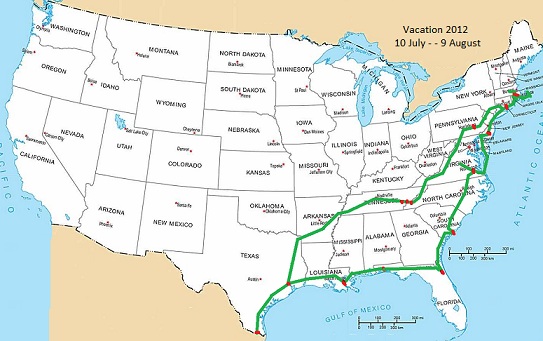
the R-pod travel trailer - - - - - - - - - - - - - - - - a map of our travels (click on map for larger version)
6 - 7 August 2012
Page 18
~ New Orleans, Louisanna ~
We arrived at the KOA in New Orleans (actually in River Ridge, LA) just before 10:00 PM.
The route that the GPS gave us led us through narrow streets and residential neighborhoods.
The KOA staff person thought we might have gotten lost.
It was interesting backing into the camping spot in the dark, but we managed it.
The staff were very accomodating.
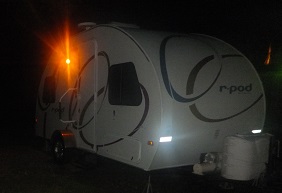
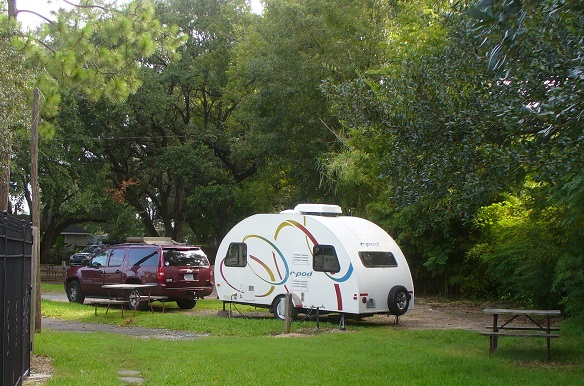
New Orleans KOA, nestled in a residential neighborhood.
The morning of 7 August we got tickets for a trip on the steamboat Natchez from the office at the KOA.
that was very convenient.
We managed to take a wrong turn on the way into downtown New Orleans and managed to go over the Mississippi River
on one of the high bridges, immediately turn around and find our way downtown. We parked in the parking lot shown below.
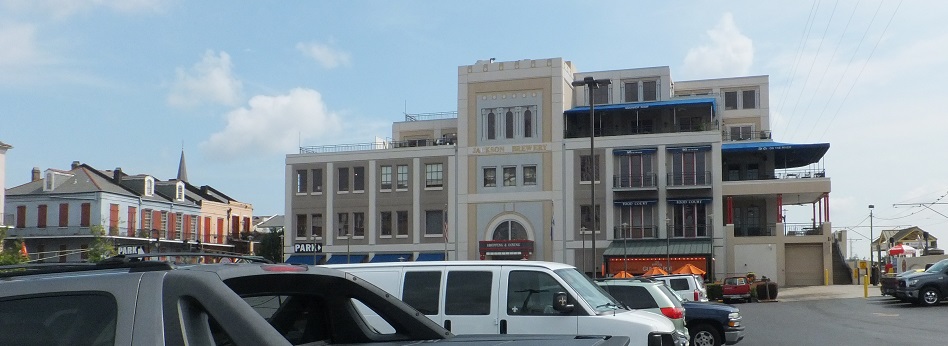
Jackson (Jax beer) Brewing Co. building - now shops.
This is the west side, where a large parking lot accomodates downtown New Orleans. NE of this is Jackson Square.
To the right over the levee is the Mississippi River and the dock for the sternwheeler Natchez.
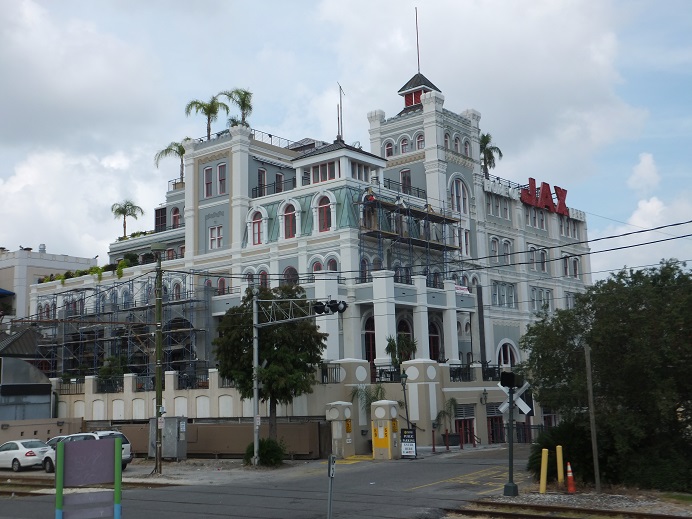
The other side of the Jackson Brewing Co. building
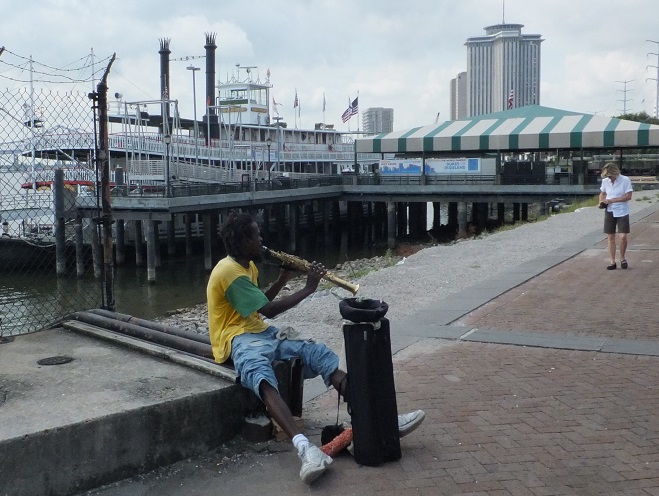
We walked on the river side of the Jax building on to the top of the levee.
There was a busker (street musician) playing on top of the levee, here shown with the Natchez in the background.
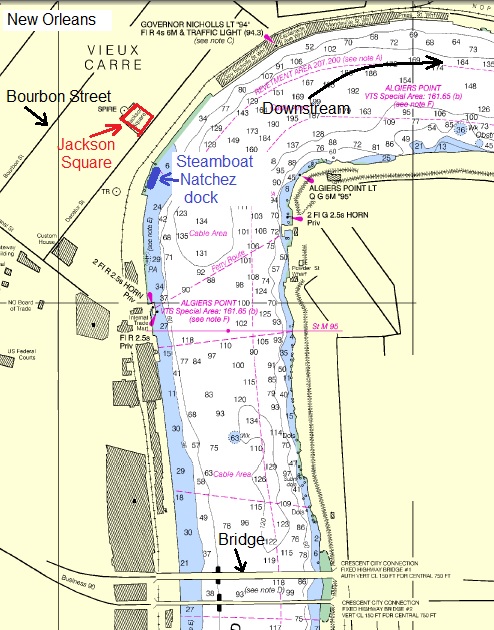
-
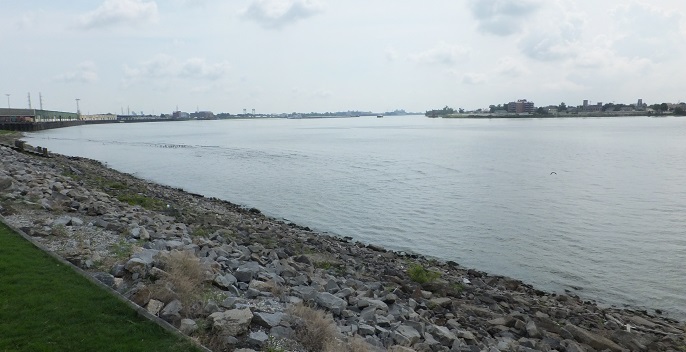
The Mississippi River looking downstream from the levee.
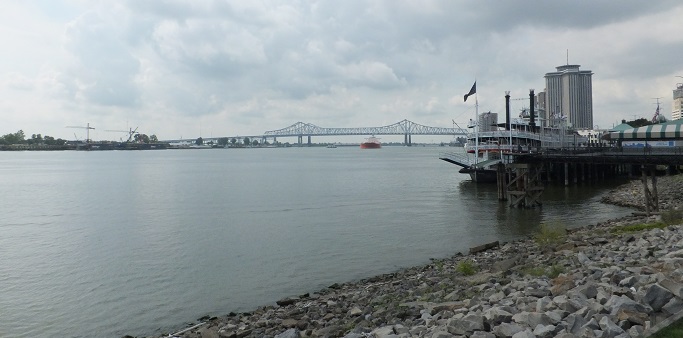
Looking upstream from the levee. The Algiers bridge. The Natchez at dock on the right.
If I remember correctly, Algiers (on the left here) did not flood during Hurricane Katrina.
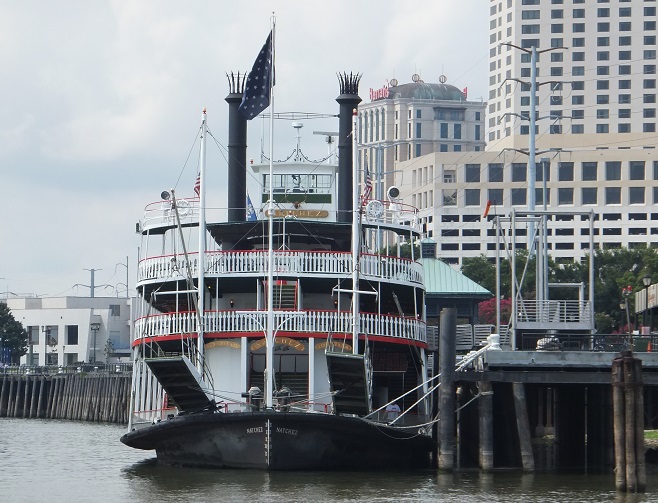
The Natchez head-on. A true steam powered paddle wheel boat.
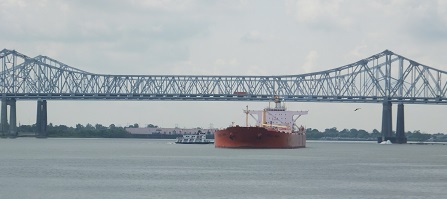 -
- 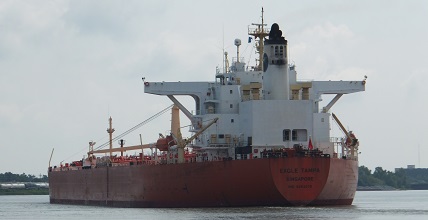
The Eagle Tampa, registered in Singapore, a large oil tanker (VLCC) very large crude carrier, going down river.
Built in 2003, Length 810 ft. Max Beam 137 ft. - DeadWeight 107,123 tons -- Speed Average = 12.5 knots

An example of the larger ships that constitute some of the river traffic on the lower part of the Mississippi.
We were early for our short excursion on the Natchez so took a look around Jackson Square before boarding.
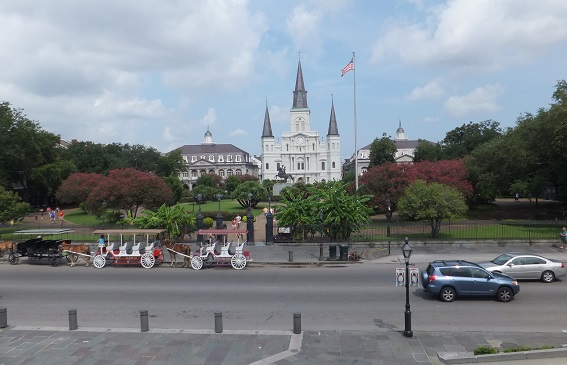
Looking down from the top of the levee across Jackson Square to St. Louis Cathedral.
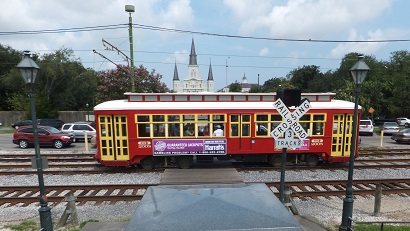 -
- 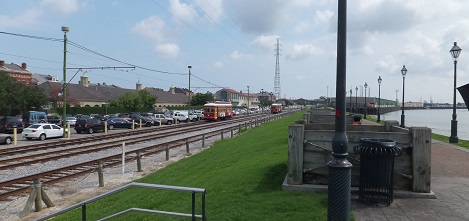
a trolly car (St Louis Cathedral in distance) and the trolly tracks which go along the levee -
~ ~ ~ ~ ~ ~ ~ ~ ~ ~ ~ ~ ~
We boarded the Natchez at 11:00 AM
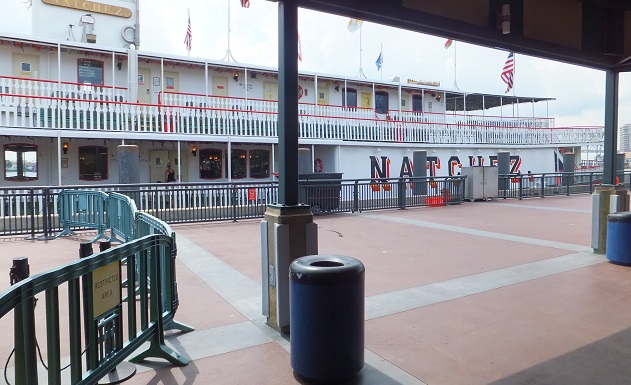
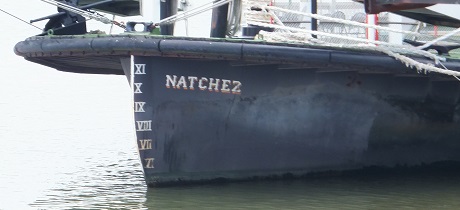
It appears she was drawing about 5 ft. of water forward just before boarding.
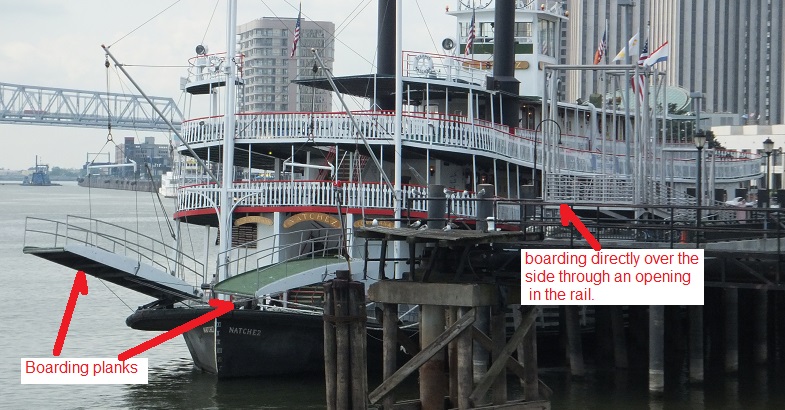
After boarding the Natchez proceeded downstream a number of miles.
An anouncer described points of interest as we passed them.
~ ~ ~ ~ ~ ~ ~ ~ ~ ~ ~
First, a tour of the steamboat.
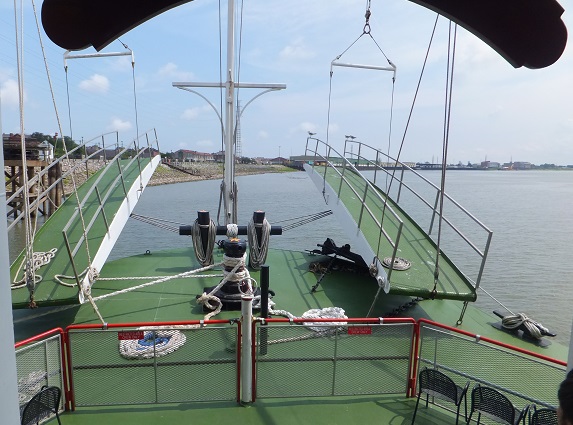
The fore deck.
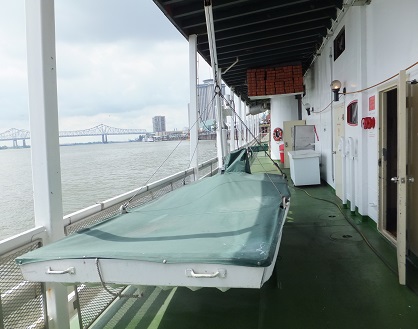 -
- 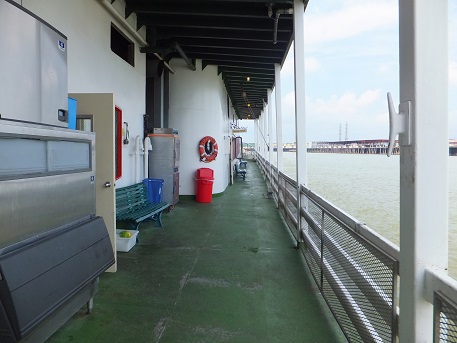
a jonboat on a side deck, ready to uncover and deploy if it is needed, - - - - - - - - - - - - - - - - - - - - Clear side deck
perhaps to pick up a passenger if one falls overboard. - - - - - - - - - - - - - - - - - - - - - - - - - - - - - - on the other side.
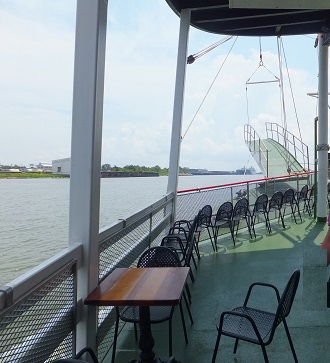 -
- 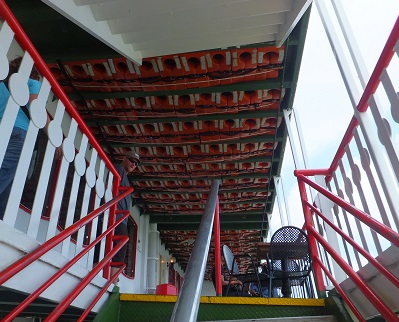
Port side second level seating forward - - - - - - - - - - - - - - - - - - - - - - - - - Plenty of life preservers stored overhead
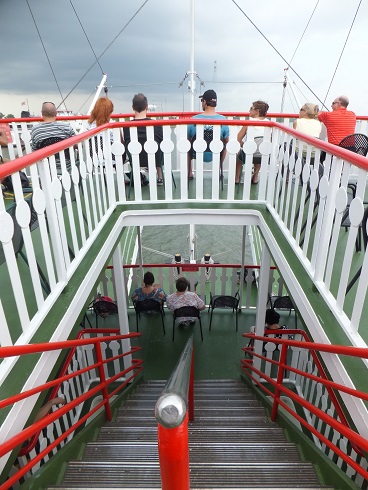
The forward stair between the top deck and the second deck
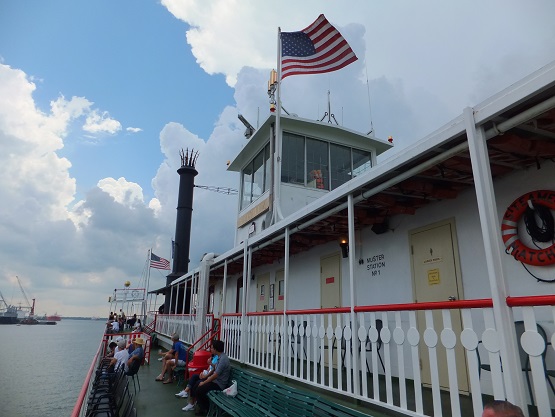
top deck, port side
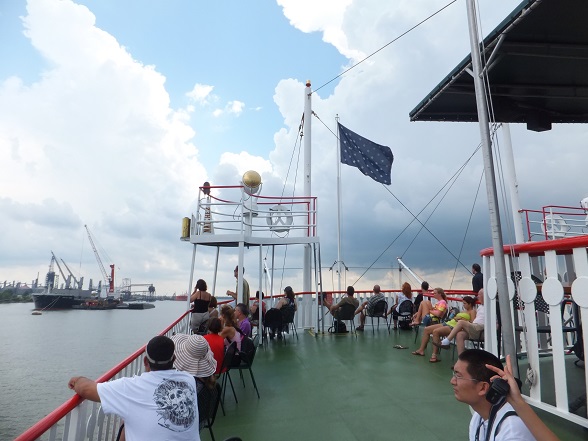
top deck forward
not photographed inside, there were dining facilities some quite fancy, a gift shop, and if I remember correctly some place to gamble.
~ ~ ~ ~ ~ ~ ~ ~ ~ ~ ~
The Machinery
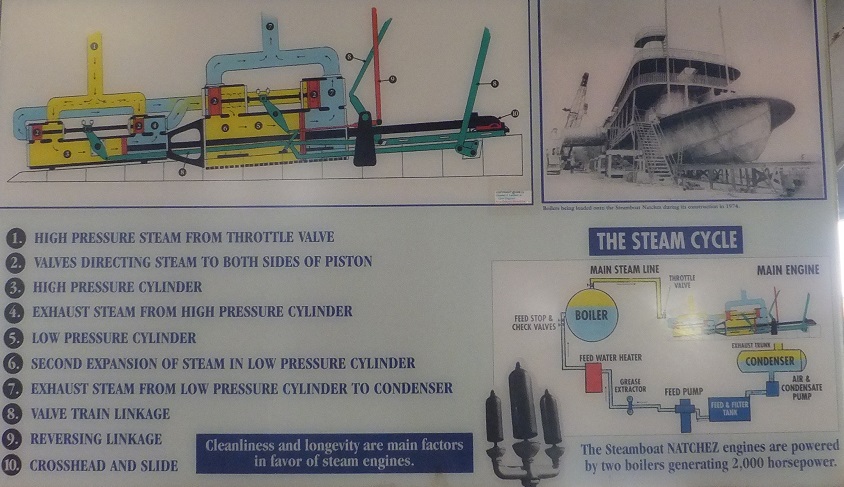
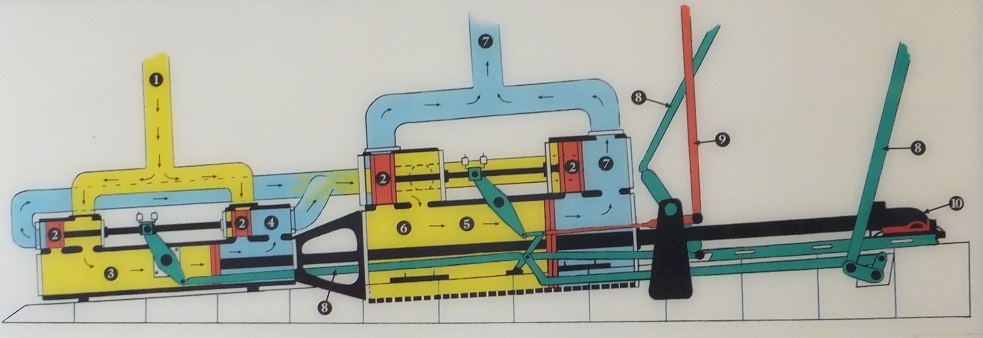

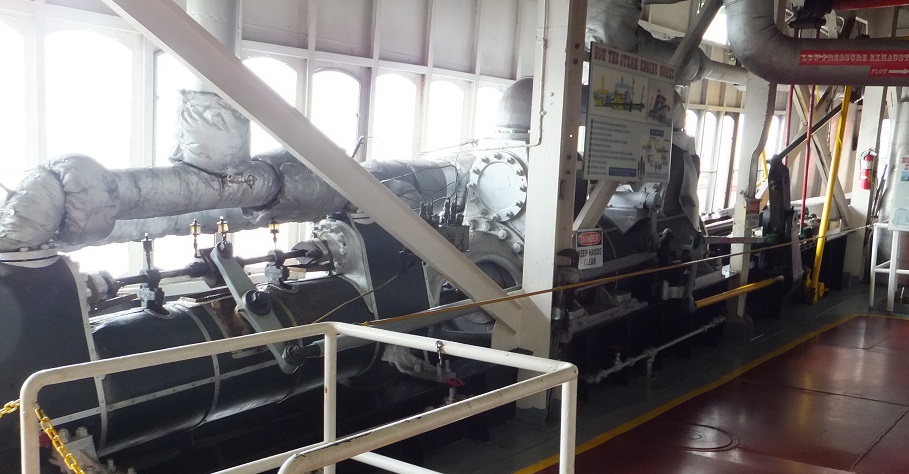
The real engine
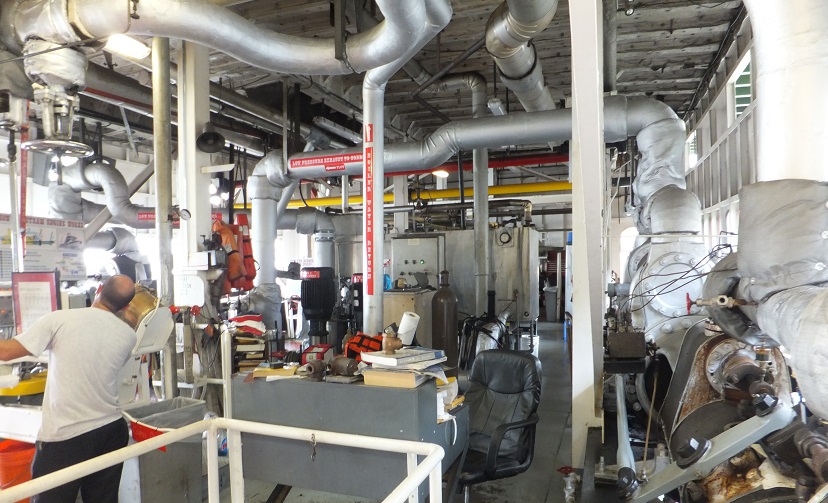
The steam engineer at work, note desk in middle of work area - it is his office too.
The if well maintained steam engines will last much longer than the boats they power.
It is common for the steam engines on paddlewheelers to have powered many previous boats,
being removed when one boat wears out and placed in a newly built boat.
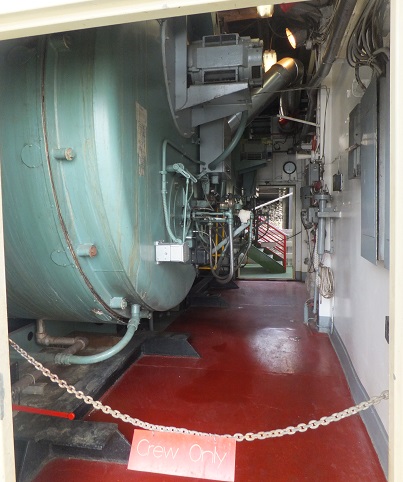
Boilers on the lower deck some distance forward of the engines - made by Cleaver Brooks in Pennyslvania
These produce the low pressure steam needed for the paddle wheel.
OK, the diagram says high pressure, that is a matter of relative pressure.
Piston steam (used on these boats) uses lower pressure, steam turbines run at much higher pressure.
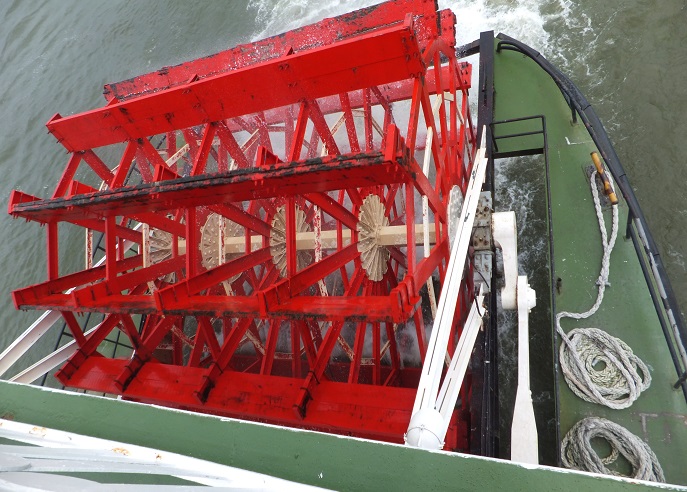
The paddle wheel from above.
The white arms on the side are directly linked to steam pistons with a long throw.
They are linked on the other end to arms on the shaft of the paddle wheel (seen in this picture)
which actually turns the paddles. The arms on either side are at 90 degrees to one another so that
at any stopping point in the revolution of the wheel there is a good angle to get force to the wheel
to start it moving, such as when it goes from forward to reverse.
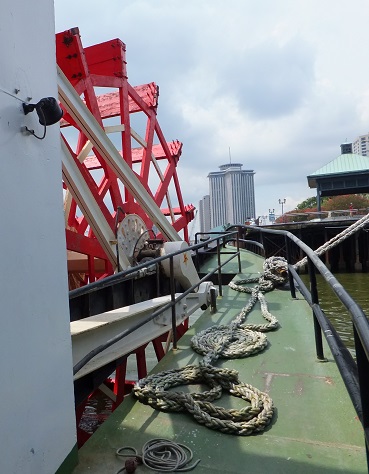
~ ~ ~ ~ ~ ~ ~ ~ ~ ~ ~
Steering
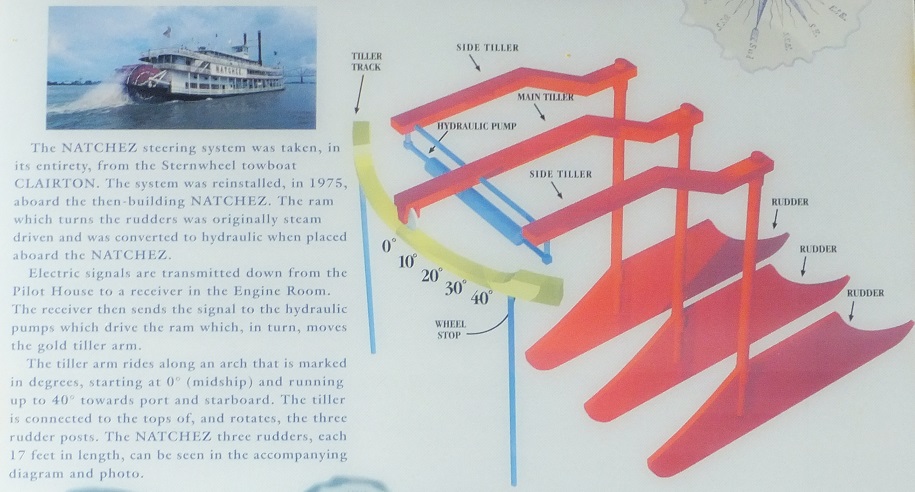
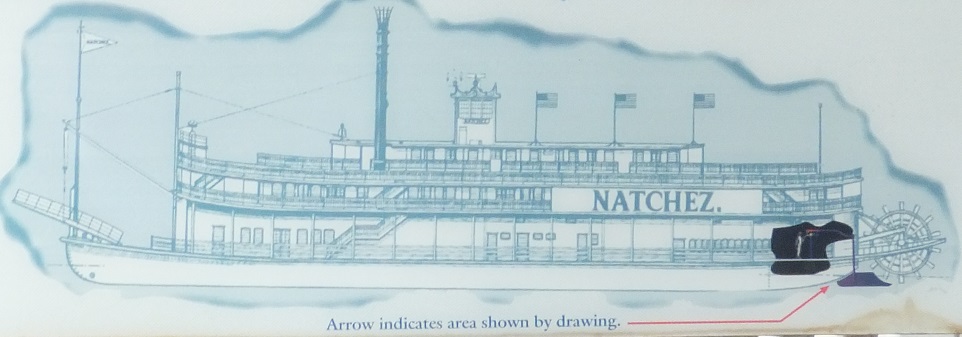
It should be noted that even with 3 rudder blades 17 ft. long, turning a conventional paddle wheeler boat is a tricky task.
The rudders must not extend too far into the water or they will be damaged when going over a shallow spot,
so they have comparatively little grab on the water.
With propeller driven boats the rudder directs the prop wash and achieves a jet-like force helping to turn the hull,
but paddle wheelers do not have that luxury.
They have to depend on the water going past the rudders by the speed of the boat through the water.
Sometimes paddle wheelers perform major turns, such as turning around 180 degrees, by going in reverse.
In reverse there may be some prop wash effect to give them more force.
~ ~ ~ ~ ~ ~ ~ ~ ~ ~ ~
what was seen while on Mississippi River cruise
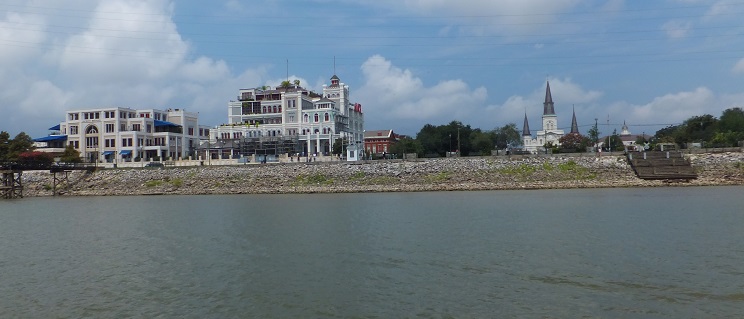
From out on the River - Jackson Brewing building and St. Louis Cathedral
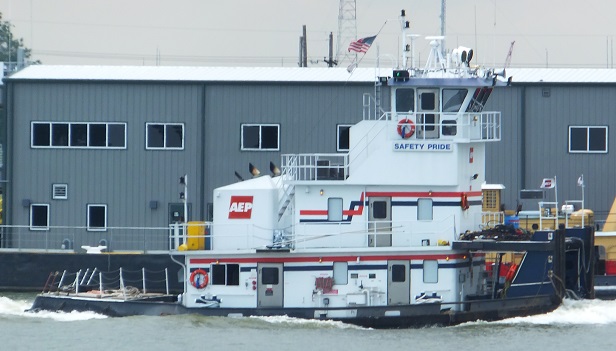
pusher tug Safety Pride 70 ft. long, beam 28 ft.
- 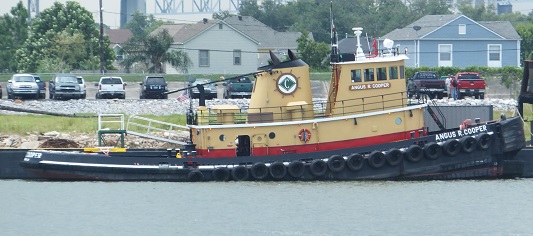
harbor tug Angus R. Cooper 91.8 ft. long, beam is 26 ft.
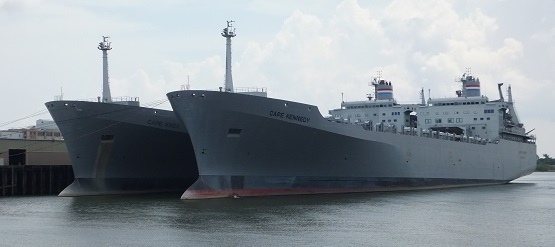
Cape K - class Roro (roll on roll off) ships Cape Knox and Cape Kennedy each gross 35,058 tons -- 695 ft. long -- beam 111 ft
They are currently owned by the U.S. government, but were previously owned by a foreign company.
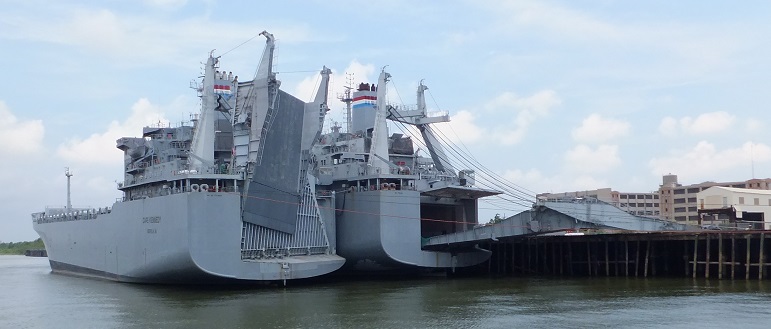
These ships may used to rapidly transport US military unit equipment
such as tanks, helicopters, wheeled vehicles and other heavy equipment, to support deployed forces worldwide.
The Vehicle Cargo Ships are operated by a private sector company under contract with the Military Sealift Command
and crewed by U.S. Merchant Marine personnel. They were built in Japan.

There are some huge barges.
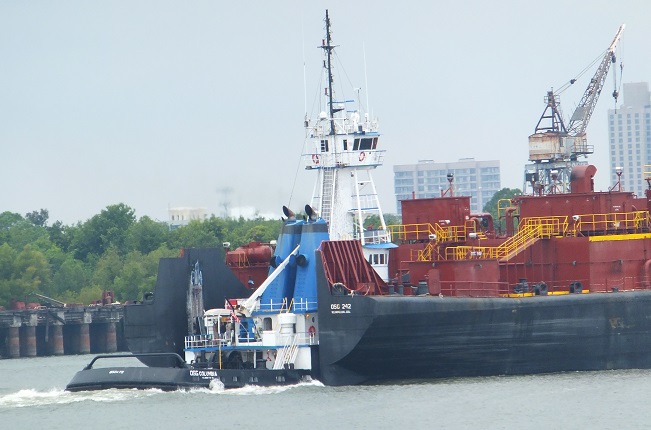
Some which have very interesting cut-outs in the stern to accomodate pusher tug boats.
~ ~ ~ ~ ~ ~ ~ ~ ~ ~ ~

A much more conventional pusher tug and barge setup
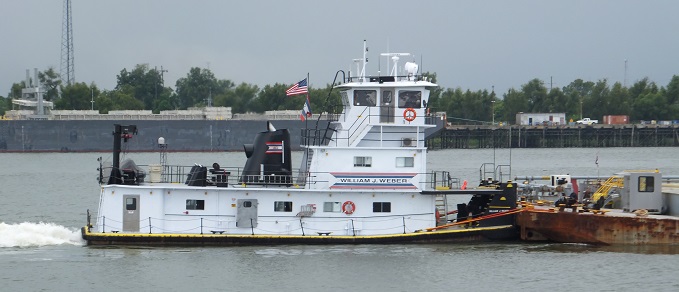
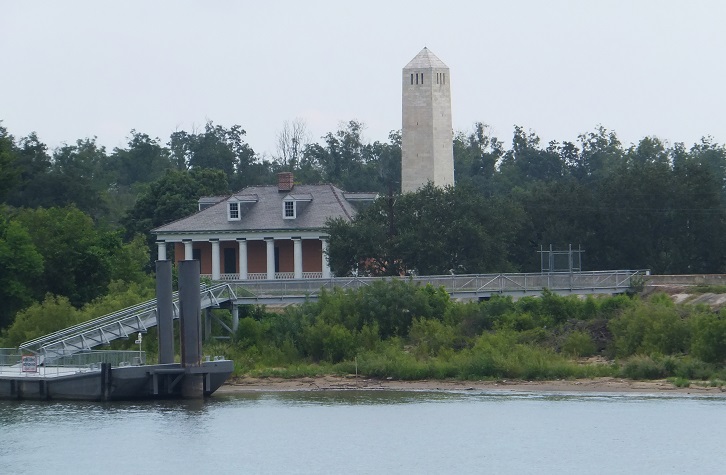
The Chalmette Battlefield oblisk and park celebrates the Battle of New Orleans which was fought with Britain as part of the War of 1812.
The war had officially already ended by the Treaty of of Ghent in February 1815,
but communications was slow and this battle, fought in 1815 saw the American victory on a field in Chalmette as the war's true end.
Andrew Jackson, and Jean Lafitte on the U.S. side fought against brevet Lieutenant General Sir Edward Pakenham on the British side.
-
New Orleans - town next page.
Vacation 2012 Index page.
Vacation Index file
update 3 June 2013 - - 6 September 2014
Return to STexBoat Index page.